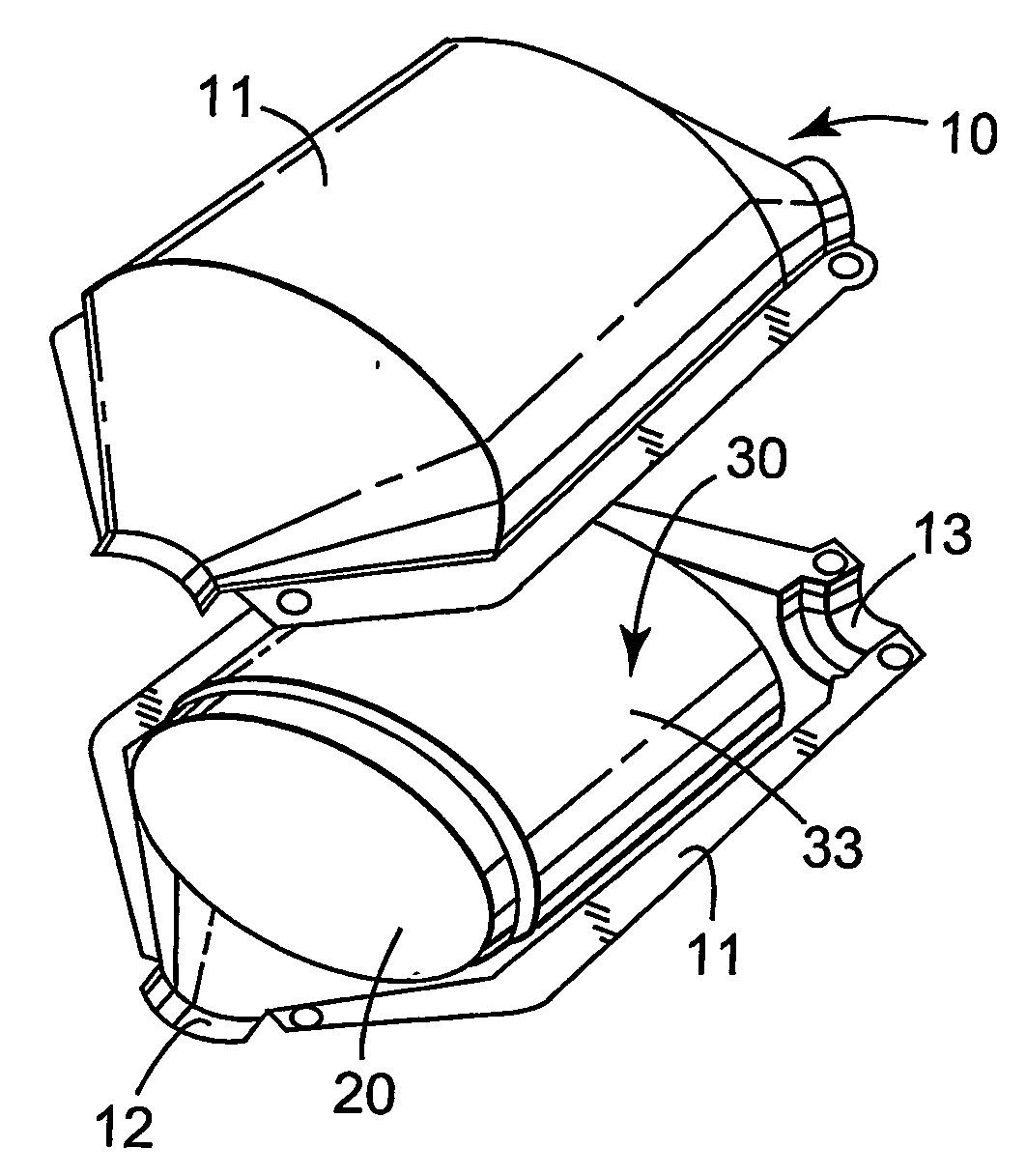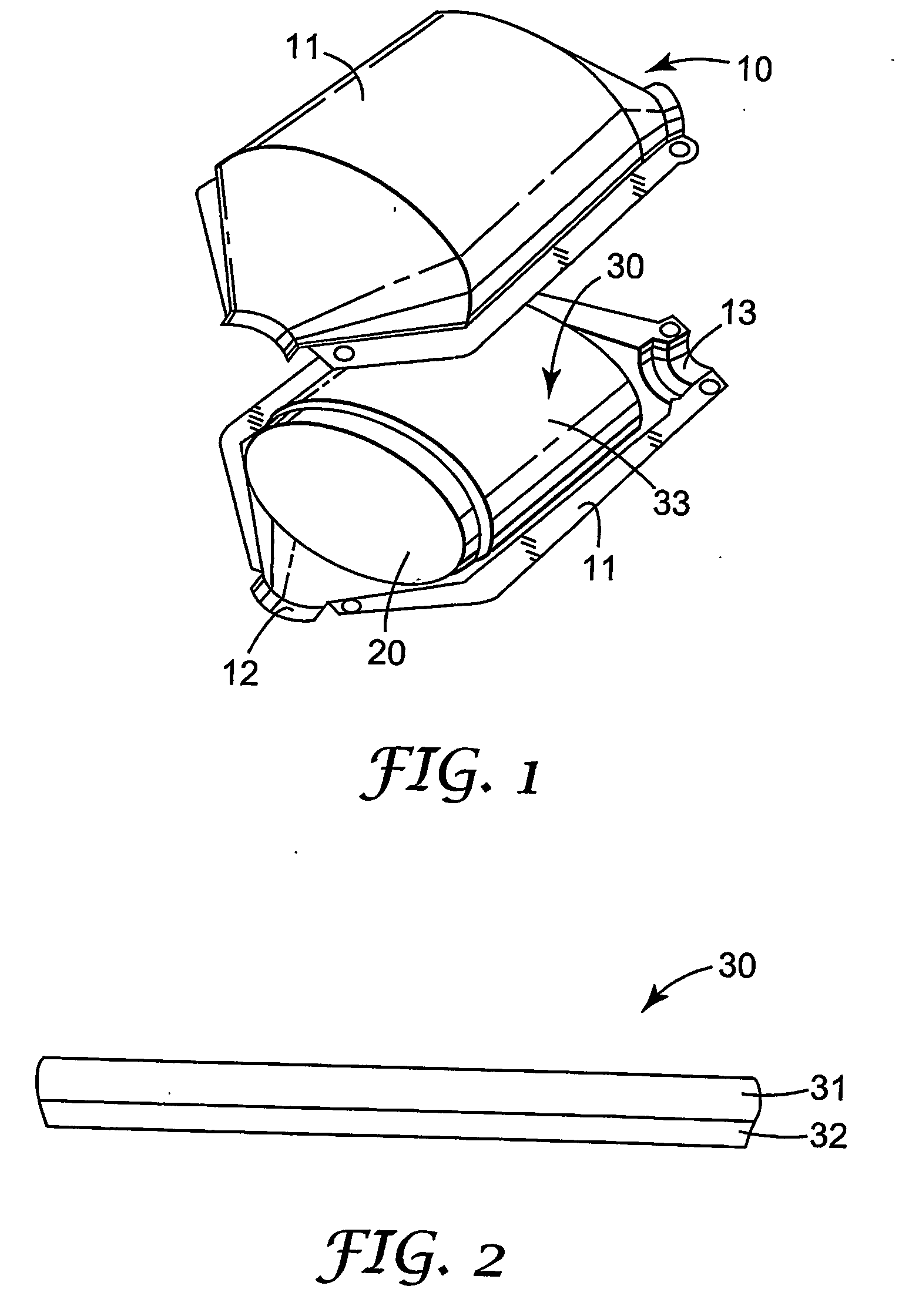Mounting mat for a catalytic converter
a technology of catalytic converter and mounting mat, which is applied in the field of mounting mat, can solve the problems of increasing the gap between the inside peripheral wall of the housing and the outer wall of the monolith, the fragility of the monolith used in the pollution control device, and the inability to withstand vibration or shock damage, etc., and achieves the effect of sufficient holding force and low cos
- Summary
- Abstract
- Description
- Claims
- Application Information
AI Technical Summary
Benefits of technology
Problems solved by technology
Method used
Image
Examples
example 1
[0053] The mounting mat of Example 1 consisted of a layer of mat of A1 having a bulk density of 0.16 g / cc placed on top of a layer of mat B having a bulk density of 0.12 g / cc. The combined mat had a bulk density of approximately 0.14 g / cc. See Table 1 below.
[0054] The real condition fixture test (RCFT) was conducted by the method described above under Test Method. The two layer mat of Example 1 was tested by placing the polycrystalline fiber layer side of the mat towards the hotter side of the RCFT test assembly and the R glass fiber layer side of the mat towards the cooler side of the RCFT test assembly and compressing the dual layer mat to a mount density of 0.35 g / cc prior to the start of the test. This resulted in a starting pressure at room temperature of 217 kPa.
[0055] RCFT results are summarized in Table 2. During the first temperature cycle, the mat showed a pressure of 55 kPa at the peak temperature. During the third temperature cycle, the mat showed a pressure of 43 kPa ...
PUM
| Property | Measurement | Unit |
|---|---|---|
| density | aaaaa | aaaaa |
| length | aaaaa | aaaaa |
| number average diameter | aaaaa | aaaaa |
Abstract
Description
Claims
Application Information
 Login to View More
Login to View More - R&D
- Intellectual Property
- Life Sciences
- Materials
- Tech Scout
- Unparalleled Data Quality
- Higher Quality Content
- 60% Fewer Hallucinations
Browse by: Latest US Patents, China's latest patents, Technical Efficacy Thesaurus, Application Domain, Technology Topic, Popular Technical Reports.
© 2025 PatSnap. All rights reserved.Legal|Privacy policy|Modern Slavery Act Transparency Statement|Sitemap|About US| Contact US: help@patsnap.com


